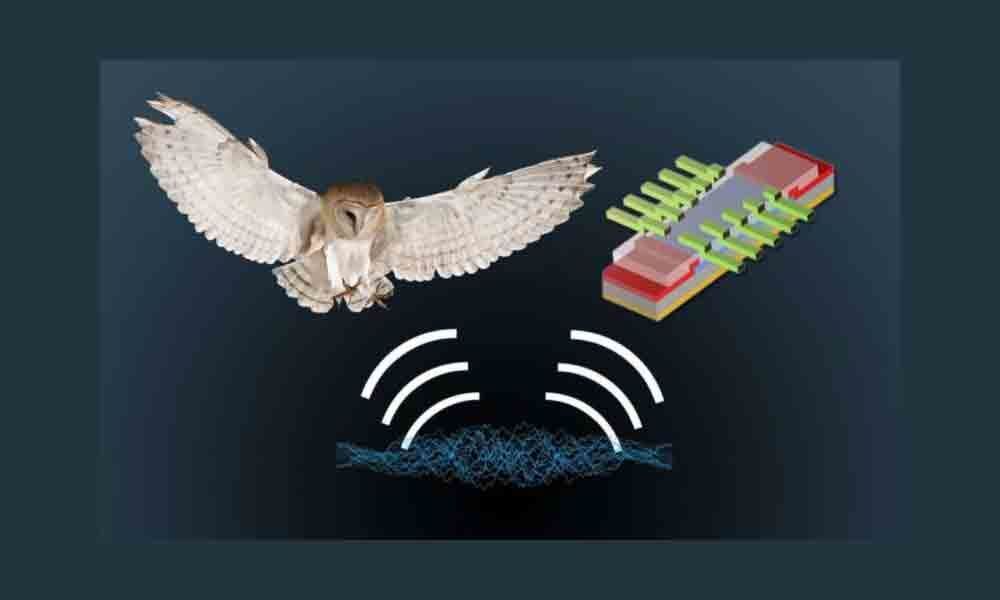Live
- Cyberabad sees 64 per cent Surge in Crime Rate
- Maternal Deaths: Collector O Anand expresses ire over medical staff
- TTD unveils vision for Global Outreach
- Women should not be confined to homes: CM Naidu
- Xmas bells toll in churches as city glows with festive joy
- Governor, CM extend Christmas greetings
- Beacons of hope and love born on December 25
- Vajpayee’s legacy lives on as country marks his birth centenary
- Rythu Bharosa to pick best from PM -KISAN scheme
- Medak wears season’s festive look
Just In
Barn owls may hold key to navigation, location devices


The way barn owl brains use sound to locate prey may be a template for navigation devices, according to Indian-origin researchers who are recreating brain circuitry of the birds in electronics.
Washington (PTI): The way barn owl brains use sound to locate prey may be a template for navigation devices, according to Indian-origin researchers who are recreating brain circuitry of the birds in electronics.
"We were already studying this type of circuitry when we stumbled across the Jeffress model of sound localisation," said Saptarshi Das, assistant professor at Pennsylvania State University in the US.
The Jeffress model, developed by Lloyd Jeffress in 1948, explains how biological hearing systems can register and analyse small differences in the arrival time of sound to the ears and then locate the sound's source. "Owls figure out which direction the sound is coming from to within one to two degrees," said Saptarshi.
"Humans are not that precise. Owls use this ability for hunting especially because they hunt at night and their eyesight isn't all that good," he said. The ability to use sound to locate relies on the distance between the ears, according to the study published in the journal Nature Communications. In barn owls, that distance is quite small, but the brain's circuitry has adapted to be able to discriminate this small difference. If the owl is facing the sound source, then both ears receive the sound simultaneously. If the sound is off to the right, the right ear registers the sound slightly before the left.
However, locating objects by sound is not that simple. The speed of sound is faster than the owl's nerves can function so after the owl brain converts the sound to an electrical pulse, the pulse is slowed down. The brain's circuitry uses a lattice of nerves of different lengths with inputs from two ends, to determine which length is where the two signals coincide or arrive at the same time. This provides the direction. Saptarshi and his team created an electronic circuit that can slow down the input signals and determine the coincidence point, mimicking the working of the barn owl brain.
The researchers, including Saptarshi, Akhil Dodda, and Sarbashis Das, both graduate students at Penn State, created a series of split-gate molybdenum sulfide transistors to mimic the coincidence nerve network in the owl's brain. Split-gate transistors only produce output when both sides of the gate match, so only the gate tuned to a specific length will register the sound.
The biomimetic circuitry also uses a time-delay mechanism to slow down the signal. While this proof-of-concept circuit uses standard substrates and device types, the researchers believe that using 2D materials for the devices would make them more accurate and also more energy efficient. The reduction in power consumption would benefit devices working in the low-power domain.
"Millions of years of evolution in the animal kingdom have ensured that only the most efficient materials and structures have survived," said Sarbashis. "In effect, nature has done most of the work for us. All we have to do now is adapt these neurobiological architectures for our semiconductor devices," he said.

© 2024 Hyderabad Media House Limited/The Hans India. All rights reserved. Powered by hocalwire.com






